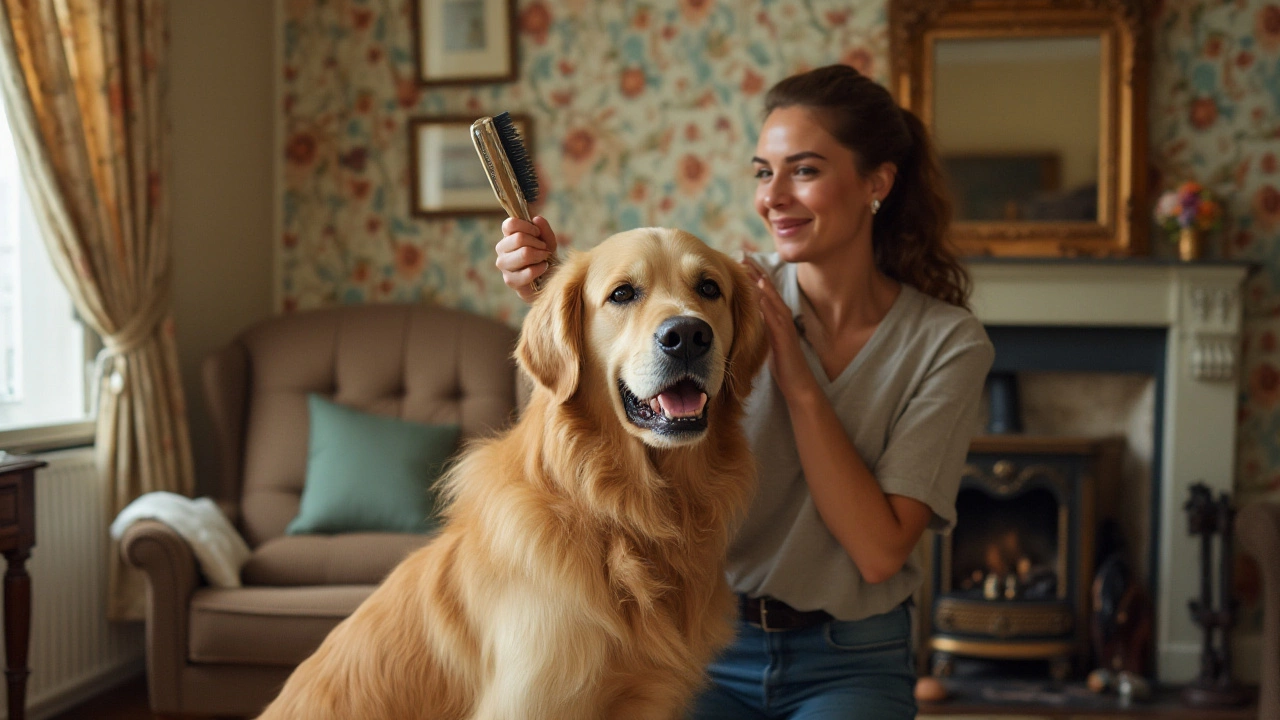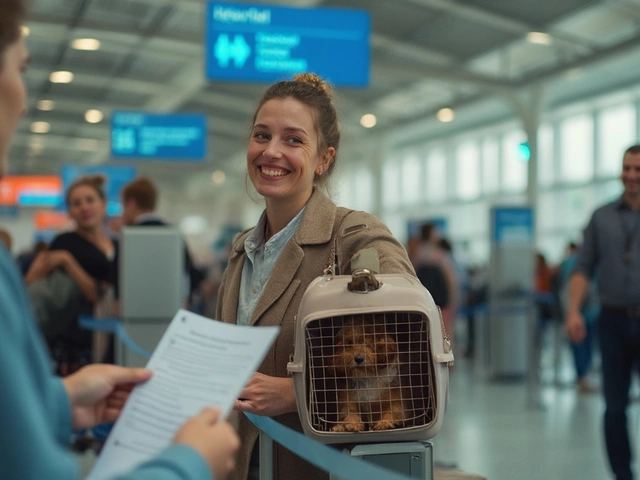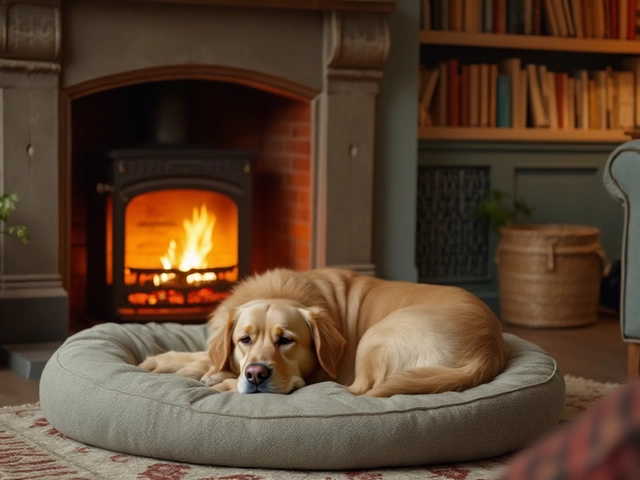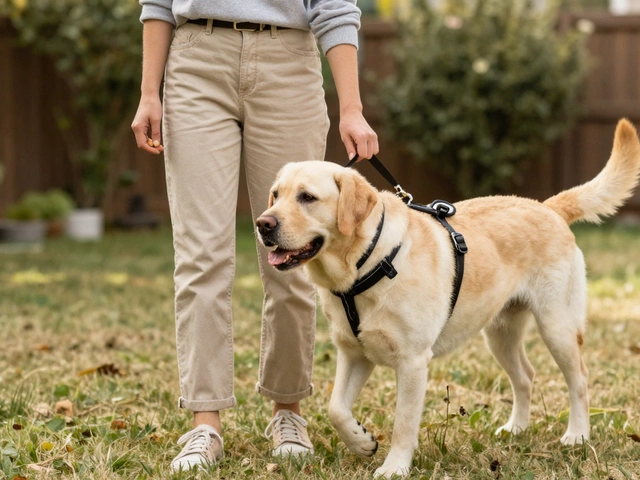When it comes to caring for our canine companions, grooming is often at the forefront of maintaining their health and well-being. Yet, despite the polished coats and trimmed nails, pet owners may encounter some drawbacks when opting for professional services. It's more than just a snip here and a brush there—grooming comes with its own set of challenges that are sometimes overlooked.
While professional grooming offers a touch of cleanliness and style, it can also burn a hole in your wallet. Many are familiar with this financial sting, especially when they factor in the frequency some breeds require maintenance. On top of that, routine visits to the groomer might not always sit well with pets, inducing stress or anxiety for some. The unfamiliarity of the environment and the handling by strangers can all add to the distress.
Another issue lies in the experience—or lack thereof—of certain groomers. Mistakes and mishaps, whether from miscommunication or inexperience, can lead to injuries, leaving pet owners to regret the decision. Furthermore, the convenience of dropping your dog off might quickly turn into an inconvenience when scheduling conflicts arise.
- The Expense of Professional Grooming
- Stressful Experiences for Pets
- Risks of Inexperienced Groomers
- Inconveniences and Time Constraints
- Unexpected Health Concerns
The Expense of Professional Grooming
Choosing a dog grooming service might seem like embracing an effortless life of luxury for both you and your furry friend. Yet, the costs can quickly add up, leaving many pet owners pondering whether it is truly worth it. According to Petfinder, the price of a basic grooming session ranges from $30 to $90, depending on the size and breed of your dog, not to mention any additional services that might be tempting. This could include nail trimming, flea treatments, and even specialized shampoos for sensitive skin. All these extras come with their individual price tags, which can surprise those looking for a quick pampering session.
Besides, your pup’s breed plays a significant role in how often grooming services are necessary. Breeds like Poodles and Bichon Frises are known for their high-maintenance coats, requiring frequent professional attention to avoid discomfort and matting. Such breeds might need a trip to the groomer every four to six weeks, swiftly turning grooming into a repetitive expense. For families juggling budgets, this regular outlay might not be feasible without cutting back elsewhere, leading to tough choices.
The geographical location of your grooming service is another price influencer. Urban areas, with their higher cost of living, often see much steeper rates than smaller towns or rural settings. It’s not uncommon for city dwellers to fork out twice as much for the same service found cheaper elsewhere. Also, demand can drive prices skyward, within busy cities, popular groomers with impeccable reputations may charge a premium for their much-coveted slots. These financial considerations are a crucial part of choosing the right grooming service for your beloved pet.
“For some, the price of professional grooming is comparable to a utility bill,” commented Jane Ainsley, a well-regarded dog behaviorist. “You have to prioritize and budget accordingly, or the costs will catch up with you before you realize.”
The cost doesn’t end with the appointment fee. Most businesses suggest tips for the groomer, akin to restaurant service tips. While this is optional, it is often practiced and drives monthly expenses even higher. You’d be wise to discuss with local groomers about any loyalty programs or discounts which can ease financial strain in the long term.
There's an increasing trend for dog grooming membership or subscription services that can sometimes lessen the cost burden by offering bundle options or pre-paid packages. These packages might include a set number of visits per year, at a reduced rate, and prove more favorable for frequent appointments, saving significant amounts compared to paying each visit separately. Such strategies highlight that being financially savvy doesn’t mean skimping on essential care. Rather, it means planning ahead to give both you and your pet peace of mind.
Stressful Experiences for Pets
Bringing a beloved dog to a grooming appointment might seem like a routine task, yet for some pets, it is anything but pleasant. Professional grooming environments can overwhelm, with unfamiliar sounds of clippers buzzing and dryers whirring, as well as scents that might confuse or scare them. Dogs, with their heightened senses, often pick up on these stimuli, causing them to feel anxious or stressed. The presence of unfamiliar handlers, other anxious animals, and the constraints of being tethered can all exacerbate the situation, making the experience less than enjoyable for our furry friends.
Understanding these stress-inducing factors can help pet owners prepare their dogs ahead of time. Many pets are creatures of habit, and simply introducing a new routine or breaking an established one can elevate their stress levels. Some dog breeds are particularly sensitive to changes and atmospheres. Breeds like Chihuahuas or Whippets might become nervous easily, while larger breeds might demonstrate fear through resistance or agitation, which can complicate grooming tasks. The setting is a melting pot of various stimuli, and without proper acclimation, this could lead to a stressful scenario for your dog, and potentially for you as well.
Stress can manifest in different ways, from minor signs like trembling, panting, or whining, to more severe behaviors such as aggression or attempts to escape. It’s important to remember that every dog has its own threshold for stress and fear, and recognizing these signals is vital. To alleviate these negative experiences, some groomers have started offering desensitization sessions where dogs can slowly get used to the process. Specialized grooming salons now employ techniques to make the experience more comfortable, such as using quieter equipment or allowing the owner to remain with the pet. According to a study published in the Journal of Veterinary Behavior, controlled exposure to stressors can effectively reduce anxiety in pets over time.
“Reducing anxiety in dogs during grooming isn’t just about the pet; it’s about the process. A sensitive approach can turn a dreaded chore into a bonding experience,” suggests Dr. Emily Carter, a veterinary behavioral specialist.
Pet owners can play a crucial role in smoothing out these grooming days. Introducing positive reinforcement methods, like rewarding calm behavior with treats, works wonders for associating grooming with positive outcomes. Even training sessions at home, where the dog gets comfortable with grooming tools, might stride a long way in reducing anxiety. Owners should also communicate any concerns to the groomer—they are professionals who can adjust techniques to better suit a pet’s needs.
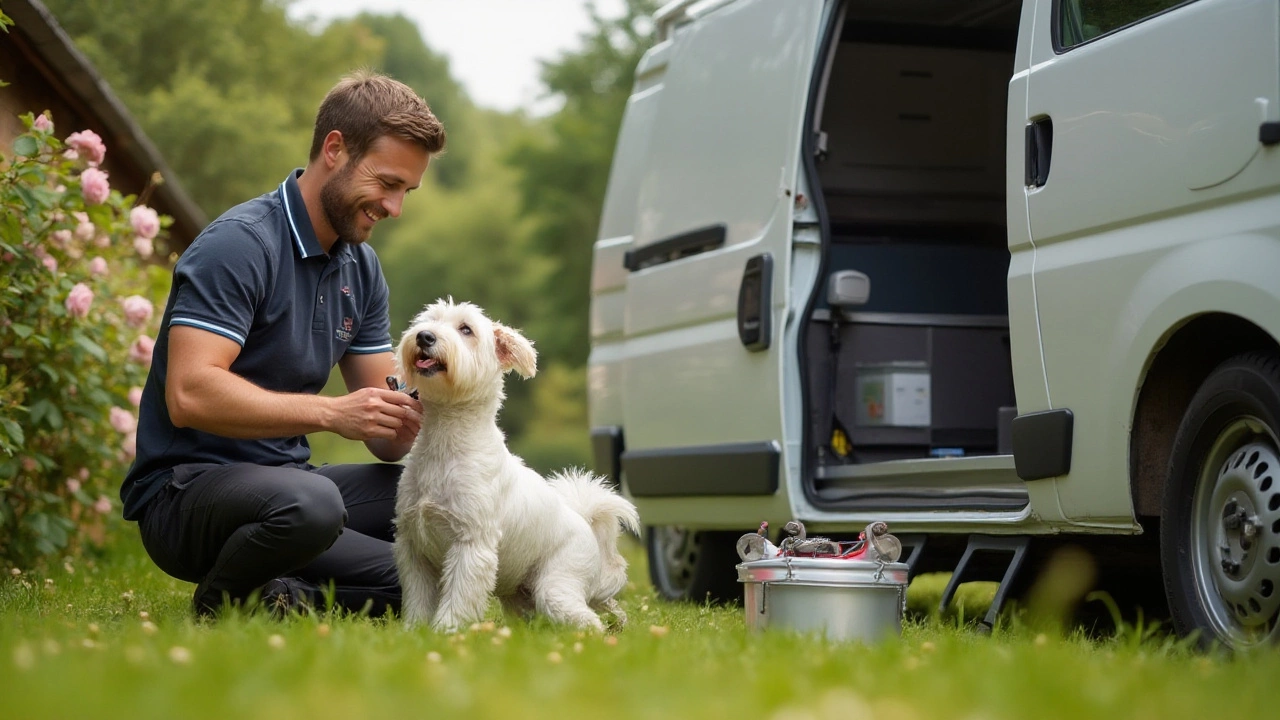
Risks of Inexperienced Groomers
Choosing the right groomer for your furry companion can feel like a daunting task, especially considering the potential risks associated with someone lacking experience. Entrusting a loved pet to a groomer means relying on their expertise in handling everything from skin sensitivities to clipper blade guards. An inexperienced groomer might inadvertently handle tools without the right technique, leading to cuts or bruises on your pet. Worse off is when they use products that may cause allergies or skin irritations because they don't possess adequate knowledge of breeds and their specific needs.
At times, the lack of experience shows through incomplete or uneven grooming, leaving parts of your pet's coat tangled or too short. Owners find themselves bringing their pets back sooner than expected, incurring more costs and causing additional stress to their pets. It's crucial to acknowledge that not every groomer is familiar with the specific health conditions that certain breeds might have. When they're not well-versed in areas such as ear cleaning, tooth brushing, or nail trimming, this could lead to long-term health issues like infections or aberrant growth.
According to the Humane Society, "Proper grooming is essential to a pet's overall health and well-being." An inexperienced groomer's inability to identify potential health issues during grooming can mean the difference between early intervention and a missed opportunity for treatment. Often, groomers are the first line of defense, noticing lumps or unusual skin conditions, but a novice might not possess the eye or training to catch them. Ensuring they have a proven track record with numerous happy pup customers can alleviate a lot of this stress.
Pet grooming also involves a level of trust and emotional understanding—an area where inexperienced groomers might also lack. It's not uncommon for anxious dogs to react defensively if they sense uncertainty. This could lead to dogs wigging out during the process, which poses risks not only to them but also to the handler. Groomers should have the ability to make dogs feel at ease, making the experience more enjoyable rather than traumatizing. Seek out groomers with experience, who know how to handle difficult situations, ensuring a safe environment for pets and peace of mind for owners.
Ultimately, the lack of experience can manifest in various ways, from improper cuts to potential health hazards, making it imperative for pet owners to conduct thorough vetting of their groomers' capabilities. Trustworthiness, recommendations, and pertinent grooming expertise are key factors to consider when choosing who will care for your beloved pet, ensuring their safety, comfort, and continued well-being.
Inconveniences and Time Constraints
One of the often overlooked aspects of professional dog grooming is the time it can consume, both for the pet owner and the furry client. Booking an appointment at a pet groomer might sound efficient, but it can rapidly become a scheduling nightmare. Many groomers are booked weeks in advance, leaving less flexibility for those sudden grooming emergencies that pop up, such as muddy adventures or rolling in something less than pleasant. For some pet owners, the coordination required to fit a grooming session into their already packed calendar can feel like juggling flaming swords while riding a unicycle.
On the day of the appointment, logistics can again raise their tricky head. Depending on the location of your chosen groomer, travel time might eat into your day more than expected. This time involvement isn't just about dropping off and picking up; it often means working around the groomer's schedule, which doesn't always harmonize with your own commitments. As an added layer of time dedication, owners sometimes have to wait on-site for extended periods, either due to the groomer's schedule slipping or unforeseen delays in the grooming process. Even when asked to pick their pets up later, double round trips can become surprisingly intrusive.
Not to forget the potential waitlist frustrations, especially during peak demand, such as holidays or seasonal shedding times. A 2022 survey by the American Pet Products Association revealed that about 20% of pet owners reported at least one canceled or postponed session due to overbooking. Adding to that is the necessary task of monitoring booking platforms or calling the groomer directly, which can be inconvenient in and of itself. Moreover, while mobile grooming services strive to address such issues, they often come at a premium cost and still require a degree of advance arrangement.
"The clipping process alone can be time-consuming, taking 2-3 times longer if the dog has a particularly tangled or matted coat," notes Henry Adams, a veteran groomer with over 15 years of experience.
The entire ordeal can be taxing, deterring even the most organized among us from utilizing grooming services as often as desired. Such time constraints can steer pet owners towards exploring alternative grooming options, like home grooming kits or local DIY dog wash stations. These alternatives, while potentially saving time, open a fresh array of considerations in terms of convenience, effectiveness, and the potential need for additional on-the-job skill development for the owner himself.
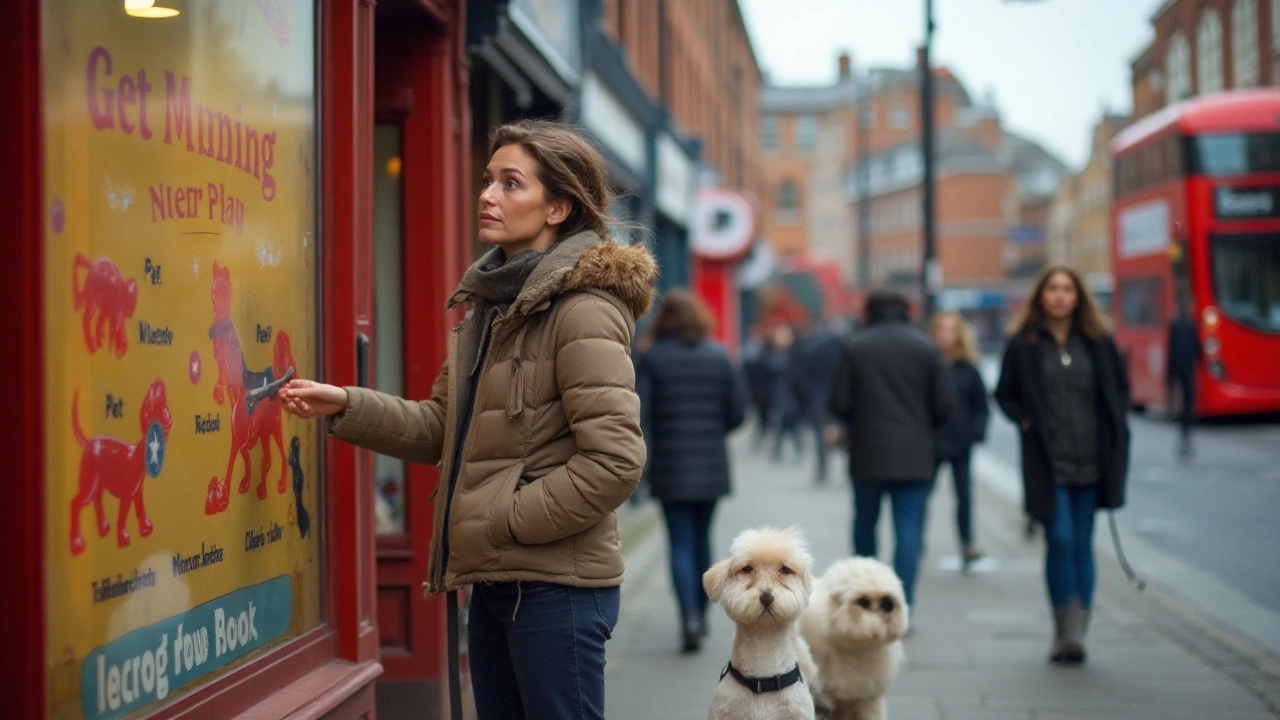
Unexpected Health Concerns
It's not uncommon for dog owners to walk into a grooming salon with hopes of returning home with a refreshed and dazzling pet. However, the truth behind the scenes of a professional grooming experience can sometimes be less than glamorous. A few unexpected health concerns can arise during or after a visit to the groomer, and these can take pet owners by surprise, often leaving them puzzled and anxious.
One significant worry is the potential for skin irritations. Some dogs, particularly those with sensitive skin, might react adversely to the shampoos, conditioners, or topical products that groomers use. This can result in itching, redness, or even painful rashes that necessitate a visit to the vet. For these reasons, it's crucial to inquire about the products in use and possibly opt for hypoallergenic alternatives tailored to a particular dog’s needs.
Another common occurrence is the transmission of parasites. Although reputable grooming parlors maintain strict hygiene standards, it's still possible for fleas and ticks to hitch a ride on your pet during their grooming session. This is especially true if a grooming salon does not adequately sanitize tools and equipment between pets. This not only poses a health risk for your dog but also for any other pets at home. Hence, a proactive approach would be to ensure your dog is on regular flea and tick preventatives before their grooming appointments.
"Awareness is key when bringing your pet to a groomer," says Linda M. Tellington-Jones, a renowned animal behaviorist. "Understanding potential risks and asking questions can make a world of difference in your pet's grooming experience."
Also alarming is the potential for injuries sustained during grooming. From mishandling to accidental nicks and cuts from clippers or scissors, the grooming process requires a skilled hand and a keen eye. An inexperienced or unfocused groomer can inadvertently cause harm. This makes researching and selecting a qualified groomer essential—one with credentials, positive reviews, and maybe even a recommendation from a trusted veterinarian or friend.
There’s also the issue of post-grooming stress. Not only does the grooming itself sometimes cause physical issues, but the associated stress can also lead to temporary behavioral changes. Dogs might exhibit signs of anxiety or agitation after particularly stressful grooming visits, which can manifest in changes in appetite or sleep patterns. The grooming environment is full of loud noises from dryers and clippers, strange smells, and sometimes, a chaotic mix of other anxious pets, all of which can be overwhelming for some dogs.
These unexpected health concerns highlight the importance of communication between pet owner and groomer. Establishing a detailed grooming history for your dog can help groomers avoid these pitfalls. Furthermore, debriefing with the groomer at the end of a session about any oddities they might have noticed on your pet's skin or coat could be crucial for early detection of issues. Keeping a careful relationship with your dog’s grooming service provides a pathway for not only a stunning appearance but, more importantly, a safe and health-conscious grooming experience.

